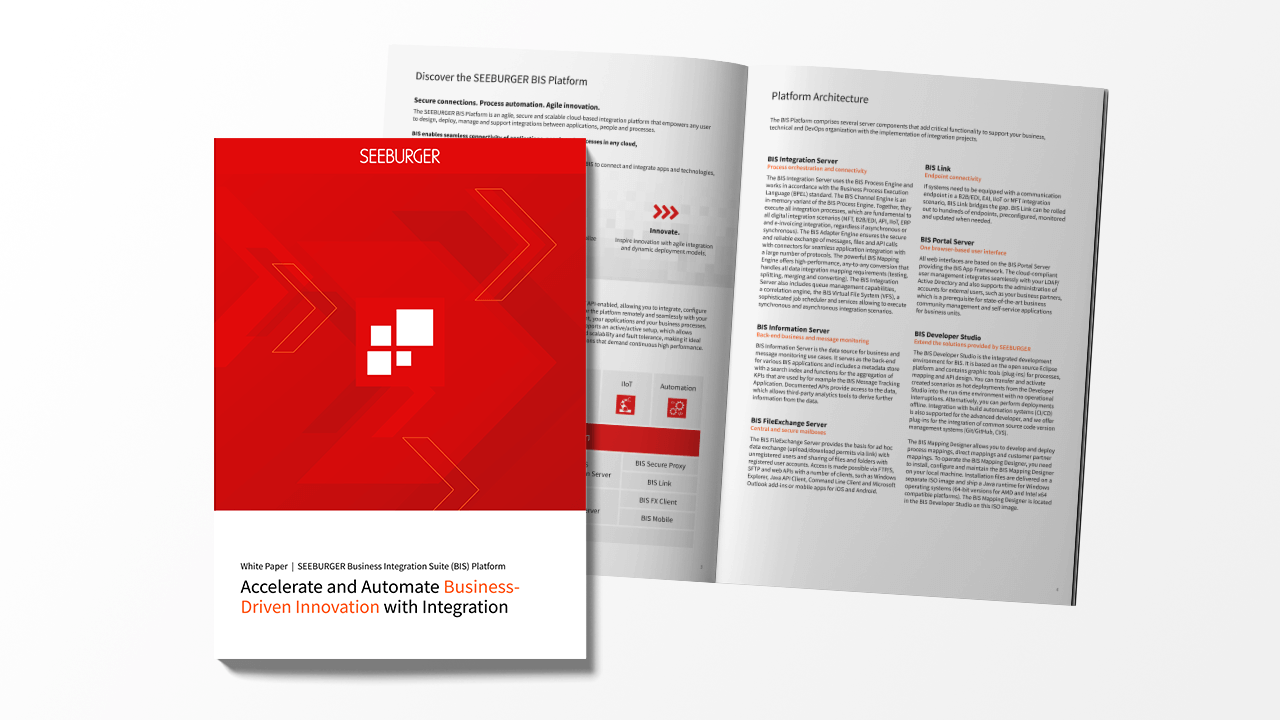
What is a VDA 4984 Message?
The VDA 4984 message is an electronic representation of a planning schedule sent to a supplier from a customer. It follows the VDA (German Association of the Automotive Industry or in German Verband der Automobilindustrie e. V.) standards and is an essential document for electronic purchasing processes in the manufacturing and automotive industry. As the base format for the VDA 4984 message, the VDA has chosen the EDIFACT DELFOR format (specifically DELFOR D.04). The new VDA 4984 message replaces the legacy VDA 4905 message.
The use of the VDA 4984 Message
Manufacturing companies use the VDA 4984 format to notify their suppliers of expected future demands. The message represents a forecast that consists of multiple lines containing data and quantity information for the requested materials. Furthermore, a VDA 4984 message can be used to also inform about last receipt goods, production, and material releases.
Typically the forecasts are prepared in the ERP system by a planning routine (disposition) and exported from there into an ERP-specific data format. With an EDI software, this format is converted into the VDA 4984 messages and sent to the suppliers. When suppliers receive the VDA 4984 message, it will create or update planning schedules and populate the information of possible order releases. Furthermore, it is specified that a new VDA 4984 message will always replace the plan of the former VDA message.
How does a typical VDA 4984 Structure look like?
Planning schedules consists of segments and elements as specified in the VDA 4984 guideline. An EDI planning schedule message document like VDA 4984 is sent, received, and processed by an EDI solution (either using EDI software on-premises or making use of an EDI Cloud Service). To ensure a smooth, automated process, it is mandatory to follow the accepted VDA 4984 standards. Otherwise, this may create errors or even prevent the document from ever arriving at the supplier.
A typical VDA 4984 Message includes:
- Information concerning parts that are ordered (material no., material description)
- Several lines specifying dates and quantities of deliveries (What is delivered when?)
- Contract and purchase order number
- Material and production releases
- Ship to address (plant and dock/gate addresses)
- Last receipt data (delivery date, delivery quantity, delivery note number)
UNA:+.? '
UNB+UNOC:3+O0013SEEBURGER:14+O0013ECONTEA+200114:0506+102'
UNH+1+DELFOR:D:04A:UN:SEE'
BGM+241:::LAB123+102+9'
DTM+137:20200114:102'
DTM+2:20200124:102'
FTX+AAI+++VERY TASTY ON DARK RYE BREAD'
NAD+BY+4019315000007++SEEBURGER AG+EDISONSTRASSE 1+BRETTEN++75015+DE'
NAD+SE+4019315000007++ECONTEA GMBH+RAHEL HIRSCH STRASSE 10+BERLIN++10557+DE'
RFF+ANK:1234501'
NAD+SF+4019315000007++ECONTEA GMBH+RAHEL HIRSCH STRASSE 10+BERLIN++10557+DE'
RFF+ANK:1234501'
GEI+3+37'
NAD+ST+4019315000007++SEEBURGER AG+KONRAD ADENAUER ALLEE 13+ATHEN++06366+DE'
LOC+11+DA::92'
LOC+7+DA::92:SEEBURGER AG'
LIN+1++BLACK FOREST HAM:IN'
IMD+F+11+::272:YUMMY'
RFF+ON:123456'
RFF+AAN:7'
DTM+171:20200113:102'
RFF+AIF:6'
DTM+171:20200112:102'
CTA+SC+ZZZ:SEEBURGER INFO'
COM+INFO@SEEBURGER.COM:EM'
COM+07252960:TE'
QTY+194:168:PCE'
DTM+50:20200111:102'
RFF+AAU:10558206'
DTM+171:20200106:102'
QTY+194:504:PCE'
DTM+50:20200104:102'
RFF+AAU:10556505'
DTM+171:202001230:102'
SCC+24'
QTY+113:0:PCE'
DTM+2:20200114:102'
UNT+36+1'
UNZ+1+102'
EDI Workflow for processing of the VDA 4984 Message
The VDA 4984 Message is created on the manufacturer’s side and is sent to the supplier. Upon receiving the EDI message, the supplier’s receiving system will validate the document against the VDA 4984 specification standards and may send back a receipt acknowledgment (VDA 4937 – APERAK). The purpose of the VDA 4937 is to confirm and transparently protocol the successful receipt of a planning schedule.
After a VDA 4984 message is received, the supplier can receive a VDA 4985 message, which is a supplement to the planning schedule messages and specifies the future demands in more detail. If the supplier is then sending the goods to the manufacturer, it will rely on the information from the VDA 4985 message.
In general, documents exchanged between customers and suppliers via EDI follow a typical sequence of business processes, which depends on the type of industry. The table below shows the role of a VDA 4984 and which other message types are used in an automotive scenario:

How is the VDA 4984 Format called in other EDI Message Standards?
The VDA standard is prevalent in the EU region when exchanging EDI messages with automotive OEMs. VDA formats are defined by the German Automotive manufacturers association (“Verband der Automobilindustrie”). In contrast to the EU region in the NAFTA region, commonly, ANSI X12 message types are also used for a wide array of industries, not just automotive. In Asia and also in the EU, EDIFACT is a widely used standard, which is also applied in many different industries. The EDIFACT DELFOR (DELivery FORcast) message and the ANSI X12 830 are used in particular for exchanging delivery schedule information.
The VDA 4905 message is the predecessor of the VDA 4984 message for exchanging planning schedules and is still used by many companies in the EU region.
Typical Errors when using the VDA 4984 Message
Typical problems that appear with exchanging planning schedules originate in transferring faulty master data. Whenever data is transmitted inside a VDA 4984 message which the supplier’s ERP system is not aware of this will require manual intervention
- New parts are requested where the part identification is not maintained in the system
- New dock/gate codes are introduced on the customer side but have not been populated in the supplier’s ERP
Benefits using EDI and the VDA 4984 Message
The benefits exchanging planning via VDA 4984 for customer and the supplier
Automate the VDA 4984 Planning Schedule Message with flexible operating models
Operate EDI stable and with timely performance to protect and enhance your supplier ratings. With SEEBURGER, you have all options for stability and speed: The SEEBURGER BIS Platform can be used on-premises as an in-house EDI operation, or as an EDI Cloud Service in the SEEBURGER Cloud or public cloud environments.










